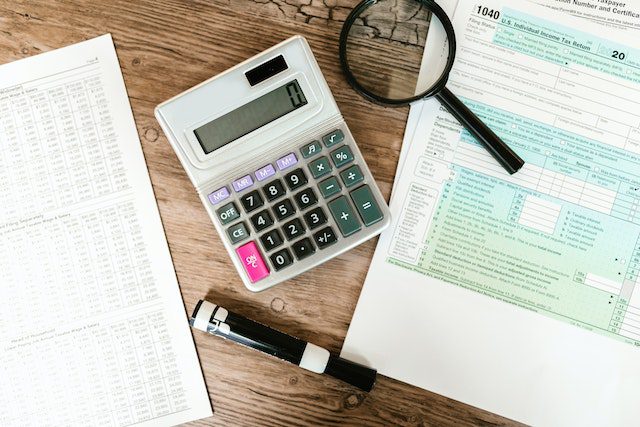The Shifting Landscape of IRS Reporting for E-Commerce: Understanding the Delayed $600 1099-K Reporting Requirement
Introduction
E-commerce has seen a significant shift recently, especially concerning the IRS reporting rules. This change affects millions of Americans who engage in business transactions through popular e-commerce platforms like PayPal, Cash App, Venmo, and Etsy. Recently, the IRS delayed the implementation of the $600 threshold for the 1099-K reporting requirement. This blog covers some of the history and highlights.
Understanding the 1099-K Reporting Requirement and Its Delay
The 1099-K form is an information return that details gross payments made on e-commerce platforms. This includes payments made through a wide array of platforms, from established entities like PayPal and Square to newer players like Venmo and Cash App. Whether you’re a freelancer receiving payment for services, a small business selling products online, or an individual participating in the gig economy, the 1099-K provides a consolidated view of your electronic payment transactions for the year.
Historical Context and the Shift in Reporting Thresholds
Historically, the threshold for issuing a 1099-K was set at $20,000 in gross payments and a minimum of 200 transactions within a calendar year. This threshold was established to focus on more significant commercial activities while excluding smaller, possibly personal or incidental transactions.
However, the digital economy’s evolution and the gig economy’s explosive growth prompted a reevaluation of this threshold. Recognizing that many gig workers, freelancers, and small online sellers operate with lower transaction volumes and amounts, Congress lowered the threshold to $600 in gross payments without considering the number of transactions. This significant reduction was intended to bring more transactions into the tax reporting fold, ensuring that income generated through these increasingly popular platforms did not escape appropriate taxation.
Delay in Implementation: A Phased Approach
The IRS’s decision to delay the implementation of the $600 threshold reflects an adaptive approach to policy implementation. For the 2024 tax filing season (tax year 2023), the status quo remains, with the $20,000 and 200 transactions threshold still applicable. This decision gives taxpayers, particularly smaller and newer platform users, more time to adjust to the forthcoming changes.
In a phased approach, the IRS plans to introduce an interim threshold of $5,000 for the 2025 filing season (tax year 2024). This step is a strategic move to bridge the gap between the original and the proposed thresholds, reducing the sudden impact on a large number of platform users. It serves as a preparatory stage, allowing taxpayers to acclimate to more stringent reporting requirements without the immediate jump to the $600 level.
Finally, by the 2026 filing season (tax year 2025), the $600 threshold is expected to be fully implemented. This gradual implementation reflects a balance between the need to enhance tax compliance and the practicalities of adapting to such a significant policy shift. It acknowledges the complexities involved in managing and reporting electronic transactions, particularly for small-scale operators who may not have sophisticated accounting systems.
Impact on Taxpayers and E-commerce Platform Users
Continued Vigilance in Reporting: Beyond the 1099-K Form
While the 1099-K form serves as a tool for reporting income from e-commerce platforms, taxpayers must remember that it does not encompass all taxable income. Income from other sources, such as traditional employment, investments, and rental properties, must also be reported. Taxpayers should be proactive in understanding their full income spectrum and reporting it accurately. This vigilance is essential, as underreporting income can lead to penalties and interest on unpaid taxes. Even in the absence of a 1099-K form, all income, including that from smaller transactions on these platforms, is subject to tax and must be included in tax filings.
Potential Confusion for Small Sellers
For small sellers, such as individuals selling handmade crafts or used items, the proposed $600 threshold could introduce a new layer of complexity. Many of these sellers may not view their activities as a business but rather as a hobby or a way to declutter. However, under the IRS rules, income from such sales is sometimes taxable. These sellers must familiarize themselves with tax obligations, distinguish between hobby and business income, and understand how to report their earnings correctly. Educational resources and potentially seeking guidance from tax professionals may become more crucial as the new threshold takes effect.
State-Specific Requirements: A Patchwork of Regulations
In addition to federal requirements, taxpayers must navigate state-specific regulations regarding e-commerce transactions. States like Massachusetts, Vermont, Virginia, and Maryland, which have implemented their $600 reporting threshold, can create a complex landscape for taxpayers who conduct business across state lines. It’s vital for these taxpayers to understand the nuances of state tax laws and comply with both state and federal reporting requirements. This situation underscores the importance of a thorough and comprehensive approach to tax planning and reporting.
Distinction Between Personal and Business Transactions
Understanding the distinction between personal and business transactions is critical for accurate tax reporting. Personal transactions, such as splitting a dinner bill or sharing household expenses, are generally not taxable. However, transactions involving the sale of goods or services for profit fall under the business category and are subject to different tax rules. Taxpayers should be diligent in categorizing their transactions correctly and maintaining clear records to substantiate their tax filings. Platforms offering the option to classify transactions as personal or business can assist in this process, but the ultimate responsibility lies with the taxpayer.
Complexities in Reporting
The world of e-commerce brings unique complexities to tax reporting. One such complexity arises when taxpayers sell personal goods at a loss. For instance, a person selling a used item for less than its original purchase price is not generating a taxable income from that transaction. However, this transaction may still be reported on a 1099-K form, leading to potential confusion. In such cases, maintaining detailed records of the original purchase price and the selling price is crucial to clarify the nature of the transaction for tax purposes.
Additionally, mixed-use transactions, where an item or service is used for both personal and business purposes, can further complicate tax reporting. Determining the proportion of business use versus personal use and allocating expenses accordingly can be challenging. Here, meticulous record-keeping and possibly consulting with a tax professional can help ensure accurate and compliant tax reporting.
Responding to Errors and Seeking Professional Advice
Anticipating and Addressing Errors in 1099-K Forms
As the volume of 1099-K forms increases due to the lowered reporting thresholds, the likelihood of encountering errors also rises. These errors can range from incorrect amounts to misclassified transactions. When a taxpayer identifies an error, the first course of action is to contact the issuing e-commerce platform for a corrected form. This process, while straightforward in theory, can be complicated by the platform’s customer service capacity and their understanding of tax-related inquiries.
Taxpayers should be prepared to provide detailed information about the discrepancies and retain all relevant documentation supporting their claim. This includes bank statements, sales receipts, and any correspondence related to the transactions in question. It’s important to act promptly, as delays in resolving these issues can lead to complications when filing tax returns.
Reporting Discrepancies on Tax Returns
In cases where obtaining a corrected 1099-K form is not feasible, taxpayers must still report the income accurately on their tax returns. This may involve documenting the error and providing an explanation along with the tax return. The IRS allows taxpayers to report the correct amount of income even if it differs from what is shown on the 1099-K. However, taxpayers should be aware that significant discrepancies between reported income and the amounts on the 1099-K may trigger IRS inquiries or audits.
To prepare for such situations, maintaining comprehensive records and documenting efforts to rectify the error with the platform are essential. This documentation can be vital in justifying the discrepancies to the IRS.
The Role of Professional Tax Advice
Given the complexities and potential challenges with 1099-K forms, seeking professional tax advice can be invaluable. Tax professionals, such as CPAs or tax attorneys, have the expertise to navigate the intricacies of tax reporting, especially in situations where there are errors or ambiguities in 1099-K forms. They can provide guidance on how to report income accurately, assist in communicating with e-commerce platforms and the IRS, and offer representation in case of an audit.
Tax experts can also provide strategic advice on tax planning, helping taxpayers understand the implications of their e-commerce activities and plan accordingly to optimize their tax position. This is particularly important for those with significant e-commerce income or those engaged in complex transactions.
E-commerce Platforms and Tax Advice
While e-commerce platforms are responsible for issuing 1099-K forms, they are generally not equipped to offer tax advice. Their role is to facilitate transactions and comply with reporting requirements, but they do not typically have the expertise to guide taxpayers on tax matters. Therefore, relying solely on these platforms for tax guidance is not advisable.
Taxpayers should approach these platforms as sources of transactional data and documentation rather than as tax advisors. For tax-specific advice and assistance, turning to qualified tax professionals is the recommended approach.
Legislative and Administrative Perspectives
The Debate Over the IRS’s Authority
The decision by the IRS to delay the implementation of the $600 threshold for 1099-K reporting, and to set interim thresholds, has sparked a significant debate among lawmakers and tax professionals. Some legislators have questioned whether the IRS possesses the legal authority to alter these thresholds, which were initially set by Congress. This debate touches on broader issues of administrative discretion and the scope of the IRS’s power to interpret and implement tax legislation.
Key to this discussion is the interpretation of the Internal Revenue Code, which grants the IRS broad authority to administer tax laws. However, there is a fine line between administering laws and altering legislative intent. The IRS’s decision is seen by some as a necessary response to practical and administrative challenges, while others view it as overstepping its regulatory bounds.
Implications of Legislative Uncertainty
This uncertainty in the IRS’s authority has broader implications for taxpayers and e-commerce platforms. Firstly, it creates a degree of unpredictability regarding future tax obligations, as taxpayers may find it challenging to plan for changes that could be subject to legal challenges or further revisions. For e-commerce platforms, this uncertainty could affect their reporting systems and processes, requiring them to remain agile and adaptable to potential changes.
Furthermore, this situation reflects the often complex and dynamic nature of tax legislation and administration. It highlights the need for continuous monitoring of tax laws and regulatory guidance, as changes can occur rapidly and have significant implications for compliance and planning.
The Role of Congress and Ongoing Legislative Efforts
Congress plays a pivotal role in this scenario, as it has the power to enact legislation that could clarify or modify the reporting requirements. There have been legislative proposals from both sides of the political aisle, suggesting different thresholds or timelines for the implementation of the 1099-K reporting changes. These proposals reflect a recognition of the challenges posed by the $600 threshold, particularly for small sellers and gig workers, and an attempt to find a more balanced approach.
The legislative process, however, is often slow and subject to political negotiations and compromises. This means that while Congress debates and considers these proposals, the IRS’s interim measures will likely remain in place. Taxpayers and e-commerce platforms must therefore stay informed about both legislative developments and administrative guidance from the IRS.
A Changing Landscape
For taxpayers and tax professionals, this legislative and administrative landscape requires a high degree of vigilance and adaptability. Keeping abreast of changes, understanding their implications, and being prepared to adjust strategies and reporting practices are essential. This situation also underscores the value of professional tax advice, as tax experts can provide up-to-date information and guidance on navigating these changes.
Conclusion
The delayed implementation of the $600 threshold for 1099-K reporting in e-commerce transactions provides temporary relief but also calls for continued vigilance and understanding from taxpayers. It’s crucial to stay informed about these changes, understand the distinction between personal and business transactions, and maintain accurate records.
Given the complexities of tax reporting in the e-commerce sphere, consulting with tax professionals is highly advisable. Tax experts can provide valuable guidance on how to prepare for the upcoming changes, ensure compliance with both federal and state tax laws, and offer strategies to manage tax liabilities effectively. They can also assist in resolving any issues that arise from the reporting of e-commerce transactions, such as addressing discrepancies in 1099-K forms or navigating audits.







